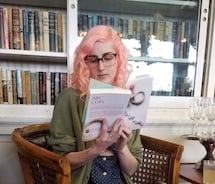Suspense is holding your breath, waiting for the other shoe to drop. Take a second to picture that moment. Notice how your body tenses; you may clench your teeth or curl your toes up. Make a note for later.
Suspense is about heightened emotions. Do you want to have your reader breathless, stressed, intrigued, wondering what’s happening and what’s going to happen next? If you do, then you need to understand and utilize suspense.
There are a few things that can make or break a scene. But in the world of suspense, they are paramount.
1. Setting/Mood
2. Character Development
3. Clues/Red Herrings
4. Conflict
Let's dive right in.
Setting/Mood
Whether the plot of your novel revolves around a murder, a missing girl, a lost puppy, or an unknown crime of some kind, the setting affects how your reader feels about it.
1. Treat your location like another character.
You need to world-build—whether you’re writing epic fantasy or a slow-paced psychological suspense mystery. If your reader can’t see where the characters are, if they lose their place in the world, the illusion is gone. You should be utilizing all of your senses—maybe not in every scene, but keep them in mind.
The importance of this in terms of suspense is easiest explained in a few examples:
- How would the reader know to hold their breath if they don’t realize that the character lying on the couch is completely unaware there’s someone picking the lock of their front door?
- Why would I worry about a potential car crash if I don’t know the characters have left the kitchen?
- If the characters are currently in no space at all—merely having a conversation with no spacial context—can I even feel nervous?
2. Use cheesy romance tropes as a guide, and set the mood.
Okay, so Marvin Gay and rose petals probably won’t help (I said probably; it’s your novel). But there is something to setting the mood with music or scents or smells.
What sets your (or your character’s) teeth on edge? Is it a scent connected to childhood or the sound of a music box playing a specific song? Maybe rose petals on the floor speed up your character’s heart, as they have no significant other and live alone.
Take your location, give it life, then give it a mood. The room is important, but how the room feels is what heightens the emotions.

Take these two plot synopses, for instance.
(I’m choosing slightly older books for proof that the importance and use of setting is, and has always been, essential).
“Libby Day was seven when her mother and two sisters were murdered in “The Satan Sacrifice” of Kinnakee, Kansas. She survived—and famously testified that her fifteen-year-old brother, Ben, was the killer. Twenty-five years later, the Kill Club—a secret secret society obsessed with notorious crimes—locates Libby and pumps her for details. They hope to discover proof that may free Ben. Libby hopes to turn a profit off her tragic history: She’ll reconnect with the players from that night and report her findings to the club—for a fee. As Libby’s search takes her from shabby Missouri strip clubs to abandoned Oklahoma tourist towns, the unimaginable truth emerges, and Libby finds herself right back where she started—on the run from a killer.”
- Dark Places by Gillian Flynn
In Dark Places, Gillian Flynn takes us from a small town to shabby strip clubs to abandoned tourist towns in her mystery thriller. Each location brings with it a sense of sadness, of seedy darkness and lies. Just the words shabby and strip clubs in the same clause takes our mind somewhere unpleasant. Now, imagine the same synopsis in sunny California, brightly lit coffee shops, and thriving tourist towns. Her amateur sleuth may have a larger pool of persons of interest to talk to, but she’d be less inclined to go into dark alleys or back rooms if she could meet people at the local pancake house.
Now, let’s look at the second synopsis.
“On a soft summer night in Vermont, 12-year-old Lisa went into the woods behind her house and never came out again. Before she disappeared, she told her little brother, Sam, about a door that led to a magical place where she would meet the King of the Fairies and become his queen.
Fifteen years later, Phoebe is in love with Sam, a practical, sensible man who doesn't fear the dark and doesn't have bad dreams - who, in fact, helps Phoebe ignore her own. But suddenly the couple is faced with a series of eerie, unexplained occurrences that challenge Sam's hardheaded, realistic view of the world. As they question their reality, a terrible promise Sam made years ago is revealed - a promise that could destroy them all.”
- Don’t Breathe a Word by Jennifer McMahon
Here, Jennifer McMahon sets up a story that almost sounds sweet—if it weren’t for the missing child. I reference this book, in particular, to show that you don’t have to have a dreary, moody setting. We’ve got a summer night, the woods, and a magical place. Jennifer’s given us a location—the woods—that can be anything to anyone, all depending on descriptor words.
Think about that for a moment: one setting that can be sad, sweet, happy, angry, dark, or light. The beauty of that is you can take a moment with fairies and twist it to a gut-wrenching suspenseful scene of a child being taken in a few words. Suspense is about heightened emotions, right? If the location had been a big city or small town, rather than close to home, her suspense would have less of a wind-chime feel to it. And isn’t that what we all want? A unique word like “wind-chime” attached to our brand of suspense or horror? Our novels to stand out in some way?
Character Development
The beauty of character development in suspense is the ability to create problems. Each character—even your guest stars—need to be fully developed. I know what you’re thinking, but she’s just a meter maid, or he’s just a pilot. Neither has speaking lines beyond niceties.
A swinging ponytail that reminds the character of a cheerleader and a grimace that ages her beyond her forty or so years; or blue eyes, a chiseled jaw, blonde hair... maybe a scar above his bushy brows. Isn’t that already too much? Maybe... or maybe not.
I go back to Gillian Flynn’s side characters and the impact they have on the story and Libby herself. That meter maid may give her a flashback. Suddenly, that meter maid matters. The way she stands may be indicative of loathing for her job—or for the character who double-parked. And hey, could that meter maid show up later? She could; she could not. Stories go where they go. With that in mind, develop all of your characters. It’s better you know details that don’t make it into the book than for your readers to end up reading flat characters.
6 Things to Remember for Writing Strong Characters
- Develop all your characters.
- Secrets can (and should) be kept from the reader and other characters.
- Use trauma (past and present) to shape your characters.
- Wants and desires affect actions.
- Dialects tell of current and past locations, and they can be suppressed to hide that.
- The ability to change can be good or bad.
1. Develop all your characters.
Depth is the name of the game. To your reader, your characters should become fully-formed and realized people.
When someone picks up a novel, there is one universal expectation. Your reader wants to be transported to your world and immersed in your story. Even if your world-building is exceptional, the reader will be instantly taken out of it by flat characters who have little to say or think.
As a writer, you may want to write solely for yourself. I understand that, as I’ve done it before. Break genres, shatter the walls of point-of-view, but make sure your characters leap off the page—even when writing for yourself.
2. Secrets can and should be kept from the reader and other characters.
Lies can hurt or protect. Characters can lie to everyone, including themselves.
Whether the secret is a stolen deed, a dead body in the basement, or a lover, characters having secrets up the stakes for suspense. Just the idea of the secret being discovered can be suspenseful.
Now think about the following scenarios—the homeowner notices the missing deed, a snoop finds the dead body in the basement, someone sees the lover sneaking out the window. The reader is holding their breath. Their heart may race as they wait for the other shoe to drop. And depending on the point of view you use, you’re able to add more or less suspense to change the feeling from creep to terror.
For example, in Big Little Lies by Liane Moriarty, she gives one of her characters a darkness that bleeds out every so often. After only two or three scenes of letting the reader in on the character’s secrets, any time that character is involved in a scene, the reader tenses. The character could be putting away a tie or walking through the door‚ it doesn’t matter. The unknowing, the waiting and worrying about what could happen next takes hold. I’d suggest you read it. (Also, watch the HBO series for another take; I find television shows are great teachers of how scene breaks can be useful in suspense).
Lies are a helpful way to hide those secrets the characters are keeping. They also can be a way for a character to convince themselves that something is or isn’t happening.
One thing to note about lies in a mystery novel is that no reader wants to be lied to outright, only to find out at the end of the novel they never had a chance of figuring out whodunit. A great moment that demonstrates a frustration with that is in the murder mystery dinner theatre episode from the adult cartoon television series Bob’s Burgers. The narrating “lonely morgue owner” character assures the audience she isn’t the murderer at the beginning of the play, but as a “shock ending”, it turns out that she is. This is unsatisfying for readers.
3. Use trauma (past and present) to shape your characters.
As I mentioned in world-building, you should be using all of your senses.
Imagine that at the age of five, your character locked herself in the closet when she heard the sound of her window shattering. Her mother didn’t join her, but your character was too scared to call out for her. The next sound she heard was a scream. Then, she smelled pennies. When it was quiet enough, after time had stretched on and on, she opened the closet door to see her mommy sprawled out on her pink floral bedspread. Blood darkened the flowers like spilled strawberry jam, and her favorite teddy bear lay on the floor, her mother’s sliced neck dripping onto its ears.
Now have your adult character come home and find a present wrapped in pink floral paper. The gift is a teddy bear. Had it been an Amazon package with cat nail clippers, there would be no suspense to be had, but using her backstory and triggering her childhood trauma puts the reader’s senses on edge.
Is the assailant still nearby?
Is your character being watched?
Trauma in the past shapes who a character is at the time of the novel; trauma in the present can shake the core of a character, changing them fundamentally.
Could you have her significant other find the package instead? Maybe they don’t know the significance of those things. They toss the wrapping paper and keep the bear. Your character sees the paper in the trash when they go to discard a banana peel—an altogether mundane act. But now your character has a moment of worry: how and what does their significant other know, and why is there paper resembling their childhood comforter in the trash? Could it be a coincidence?
The scenarios go on and on. The idea is the character’s trauma drives suspense where there wouldn’t usually be any. If you put your character in harm’s way during your book, that can change how they view the world just as much as when they were younger—possibly more.
Trauma is intense and emotional. It can be hard to read and should be handled (and written) with care—keeping real victims in mind, so as not to go too far with descriptions. Gruesome amounts of trauma details may detract from the emotion behind it. But done with a deft hand, your readers may breathe less for it. And isn’t that what we want with suspense?
4. Wants and desires affect actions.
This one’s simple. Humans can act on impulse; they can focus on wants before needs and can be driven by desire. Not all of your characters should be those kinds of humans, as that wouldn’t be fun to read. But desire is a powerful motivator—and often not for good. If the want or desire is in opposition to another character or against the social norms, you can create suspense without much effort.
5. Dialects tell of current and past locations, and they can be suppressed to hide that.
Original locations can tell a lot about a character, or they can taint how other people view them. Using that fact can heighten the emotion around that character, so every time they show up on a page, the reader is holding their breath. It could also be a point of pride and just another piece of the puzzle that is that character.
6. The ability to change can be good or bad.
Think of superheroes. Characters within them can go dark at any moment, it seems. I’m not suggesting that, but I am suggesting that you have some characters that are more sway-able than others. That could be positive—a drug addict getting clean. You could also take it and apply it to a suspenseful scene—an impressionable kid being taunted into hurting another kid.
Vary your characters, make them jump off the page, and drag your reader into your world. You, writers, should have characters so compelling that if your book was ripped from the reader’s hands pages from the end, you’d get hate mail; they should be losing sleep wondering if Sally would make it out alive, if Harry did it, and if Kelly would ever get caught in her web of lies.
Clues/Red Herrings
These are vital in suspense, mystery, horror, and thriller novels.
With every secret or lie or crime comes clues and red herrings.
For those of you who aren’t familiar with the phrase ‘red herring’, it’s defined as, “a clue or piece of information which is or is intended to be misleading or distracting” (dictionary.com).
Whether you’re telling the story from third-person point of view or first, in present tense or past, the reader needs to have pieces of the puzzle to sort through as they go along. Those pieces don’t always have to fit in the main puzzle, though.
Lemony Snicket teaches a lot about red herrings in the Series of Unfortunate Events series. The show is another series I would recommend you watch to learn about clues. The lessons learned are ageless, despite the series being for middle-grade.
Why do clues need to exist in chapter one? Because readers start there.
The journey begins on page one, and you should hook them quickly. Value their time. After you’ve hooked them with your words and story, keep them hooked by dropping in clues. The plan is to make the reader ask themselves, “How can I stop reading when I don’t who did it? I have to find out if they’ll get caught.”
Some things to think about when working on clues throughout your novel:
- Don’t stress during your first draft.
- Add clues in only where they actually fit.
I believe first drafts should be solidly thought out and take a little while to write. Mine tend to be around 35k words—of which I use most. I am not a huge fan of editing tons of messy writing. That’s my personal preference, though.
No matter your first draft style, let the story come out before you worry about the small things. A character hiding a small bruise that later tells of self-harm doesn’t need to be in the first draft. That can be sprinkled throughout the book—at appropriate times—in one of the many drafts after the first.
Don’t toss in a character noticing a missing cup as they are walking into the kitchen just because the cup is important later. Have them remark on it while doing the dishes. Make your clues fit, or they will stick out in a way that’s a turn-off to the reader.
- Use Coco Chanel’s accessory rule, “before you leave the house, look in the mirror and take one thing off.”
- Clues don’t have to be relevant to the main plot.
Those two things sound almost contradictory, don’t they? But in truth, one can’t matter without the other. Your outfit is the main plot; the accessories are clues, red herrings, and side plots.
Think of every good suspense book or horror movie with breath-holding moments. Did all of those scenes relate directly to the central story? No. Because that would be boring. Having side stories with clues that link to them creates another layer of suspense. But you still can’t get bogged down with side plots and clues. The story needs to breathe and be able to stand on its own.![]()
Let’s imagine you’ve added a side story of a character refinancing their home. A phone call from a bank’s number won’t seem threatening until the character picks up and hears breathy threats. Suddenly, the whole room shrinks around them. The private information they had given to refinance their home feels unsafe now, as do they. Their life feels vulnerable. They’ll want to change their alarm code, their locks, and—depending on their backstory—maybe even move. You’ve brought in suspense.
Or what of a surprise party? When the lights flash on, the surprise is that someone killed another someone while they waited. Maybe during the planning, the planner shows up at the character’s home late at night wanting to come in to show napkin samples? The main story could be about a missing boy or serial killer or bombing on a military base, but the character’s lives will still go on. Events will still happen.
Use those side plots to the fullest.
Conflict
A fair few of you may be assuming I’m referring to the final conflict before the resolution. I include that, of course, but this section is about the struggles throughout the novel that cause a different kind of suspense.
Three Types of Conflict
- Conflict between individuals
- Conflict with oneself
- Conflict within communities
1. Conflict between individuals
Individual conflict–humans against humans–is compelling and relatable. Suspense can build while the characters are separate through side plots and can heighten to a peak when their stories collide.
With her back turned, she says, “I'm Carrie.” Then, she sinks into the rocking chair. Liar. I don't know why, but her name feels wrong. Two can play at that game.
“Jill,” I reply, using my mother's middle name.
– sweethearts by Elizabeth Mitchell
We see how lies can play a role in the story—the reader knows better, but the characters aren’t getting the full story. But then we see how “Jill” feels the unease now that “Carrie” is in her presence. Their stories were separate previous to this moment. Now that they’ve met, the tension rises. The conflict of their meeting puts one of them in harm’s way.
2. Conflict with oneself
When one lies to themselves, there is conflict. Keeping the lies hidden creates tension internally, which in turn can create external conflict for no apparent reason.
“The boys had always been her reason to stay, but now for the first time they were her reason to leave. She’d allowed violence to become a normal part of their life.”
– Big Little Lies by Liane Moriarty
Here we see a character who’s changed what she finds acceptable in her life and kept it hidden from those who care about her. With each previous decision she made to hide the violence or “allow” it, suspense rose and fell—scenes were created that had readers holding their breath. The fallout from her internal conflict is explosive.
3. Conflict within communities
In stories like this, there is an overarching suspense that never really lets up.
“It's strange to remember how we used to think, as if everything were available to us, as if there were no contingencies, no boundaries; as if we were free to shape and reshape forever the ever—expanding perimeters of our lives. I was like that too, I did that too.”
– A Handmaid’s Tale by Margaret Atwood
In this example, there is a constant state of conflict between the community in which the individuals have been forced to accept as their new normal. This conflict shapes the conversations, the choices made by every character. There is no end in sight, and yet the reader holds their breath, hoping they’re wrong. Keep in mind that communities can be any size—from the disabled community or drag community to the Democratic or Republican community. Don’t let the word limit you; on the contrary, let it break down barriers.
Final Thoughts
Some readers may consume a hundred books a year, others may read two a year, but more will read a handful–one a month or so.You have to stand out amongst the other one or ninety-nine books.
- Be worth their time. Use every tool in your mental and literary toolbox.
- Meet other writers. I’m not telling you to join a critique group or literary guild; I’m just suggesting you get a support system. They can be tools in your literary toolbox.
- Read. I don’t mean just fiction. I’m guilty of not reading much fiction once I get my teeth into writing a new novel or story. Free articles online demonstrate different styles and formats—from fiction to nonfiction. And there are books on writing that are so informative you’ll be shocked you’ve written a word without having read them first.
- Watch television and movies. See what’s right and wrong with cutaway scenes, dramatic pauses, and characters interrupting each other. It is also an excellent way to study dialogue, especially if you can find the scripts afterward.
- If you can afford it, go to conferences. Yes, they are expensive, but they are worthy investments. You can also check for volunteer positions; some offer a discount in exchange for help during the conference. I had to save up to go one year, and I volunteered in the limited way that I could (I’m disabled and had to help from home) for the next year. What they can offer goes beyond blog posts and books. You’ll meet other writers and agents, hear guest speakers that inspire you, and learn a lot from the courses. I took Hallie Ephron’s course on Suspense and Mystery and learned more about genre differentiation than I knew possible. I also took classes on screenplays and non-fiction writing, because seeing writing from all angles is helpful.
- Most importantly, never stop learning. I, myself, am going to the local Citizen’s Academy to learn more about behind-the-scenes of local law enforcement, as well as going to the Writer’s Police Academy for hands-on experiences Google can’t provide. Think outside the box.
With that, I give you an exercise.
The Exercise
I’m not one for giving homework, especially when you’re probably busy working on your novels, novella, short stories, poems, or experimental pieces. But I am one to challenge people. So stay with me here. With each prompt, I’d like you to go over what you’ve just learned.
These prompts are not meant to make you write anything new. Each is merely a thought exercise. The goal is to have you see your scenes in an unexpected way and to surprise your reader.
- Is this a short story or a novel?
- What is the setting and mood of the scene?
- What secrets could lead things to going wrong?
- What is the character’s frame of mind?
- Could the character have had a trauma that affects the way they view the situation?
- Is this the main plot or a side story?
- What clues could you put in earlier to lead to making this scene more suspenseful?
- What kind of conflict is happening in the example/prompt? And will it have overarching suspense or happen moment to moment?
Prompts
A person gets behind another at the grocery checkout line with an orange and an already open alcoholic beverage.
Newlyweds have a broken dishwasher.
At the funeral of a 90 year-old-person, a stranger asks to say a few words.
Four friends meet for their weekly lunch.
A person is on the phone at one in the morning.
The strap on a person’s bag breaks while they are walking down the street.
I hope some of this has you looking at your work with fresh eyes or allows you to see places you may want to amp up the suspense.
So, what are you waiting for? Go forth and write scenes that will make your readers hold their breath!















